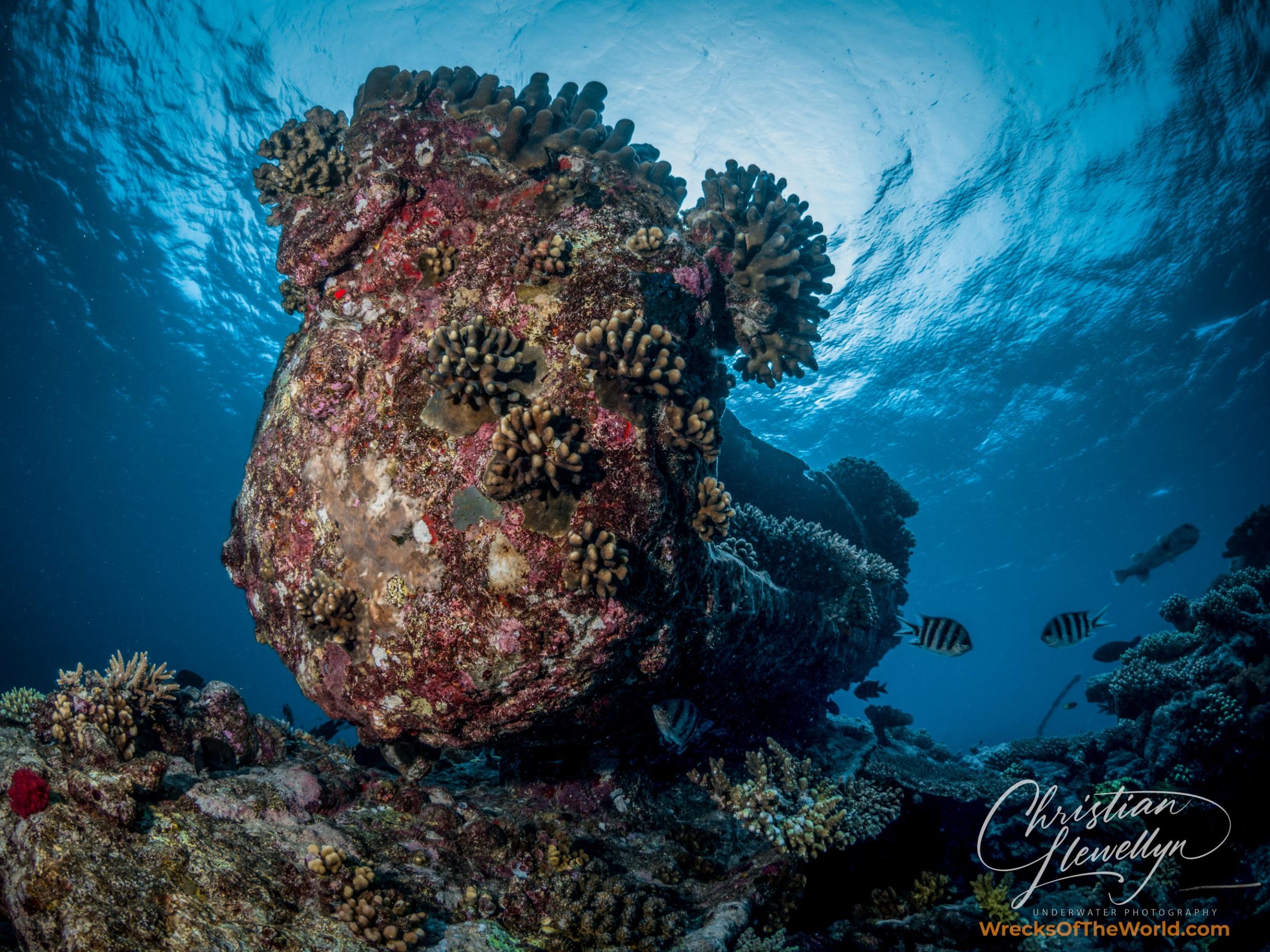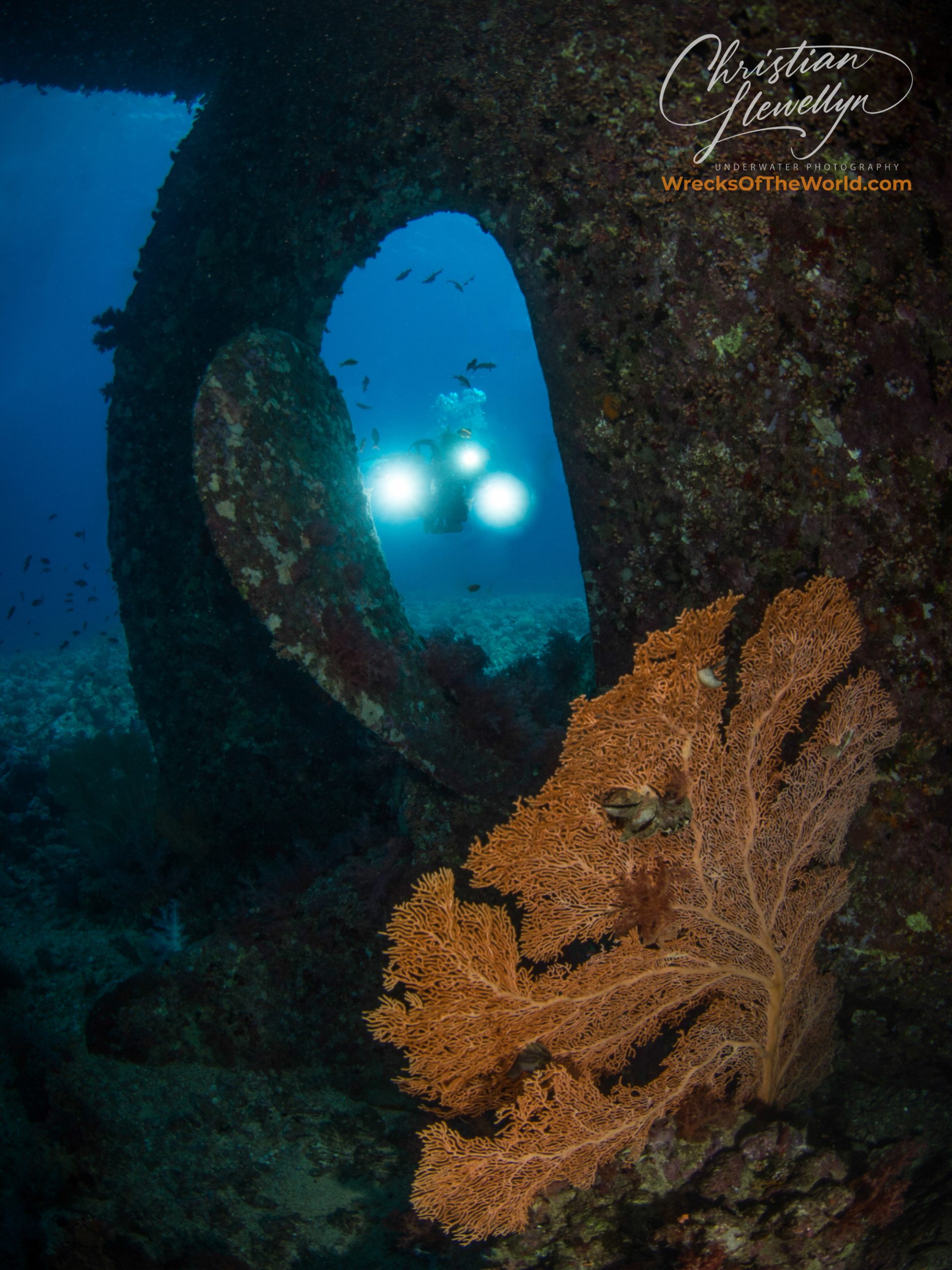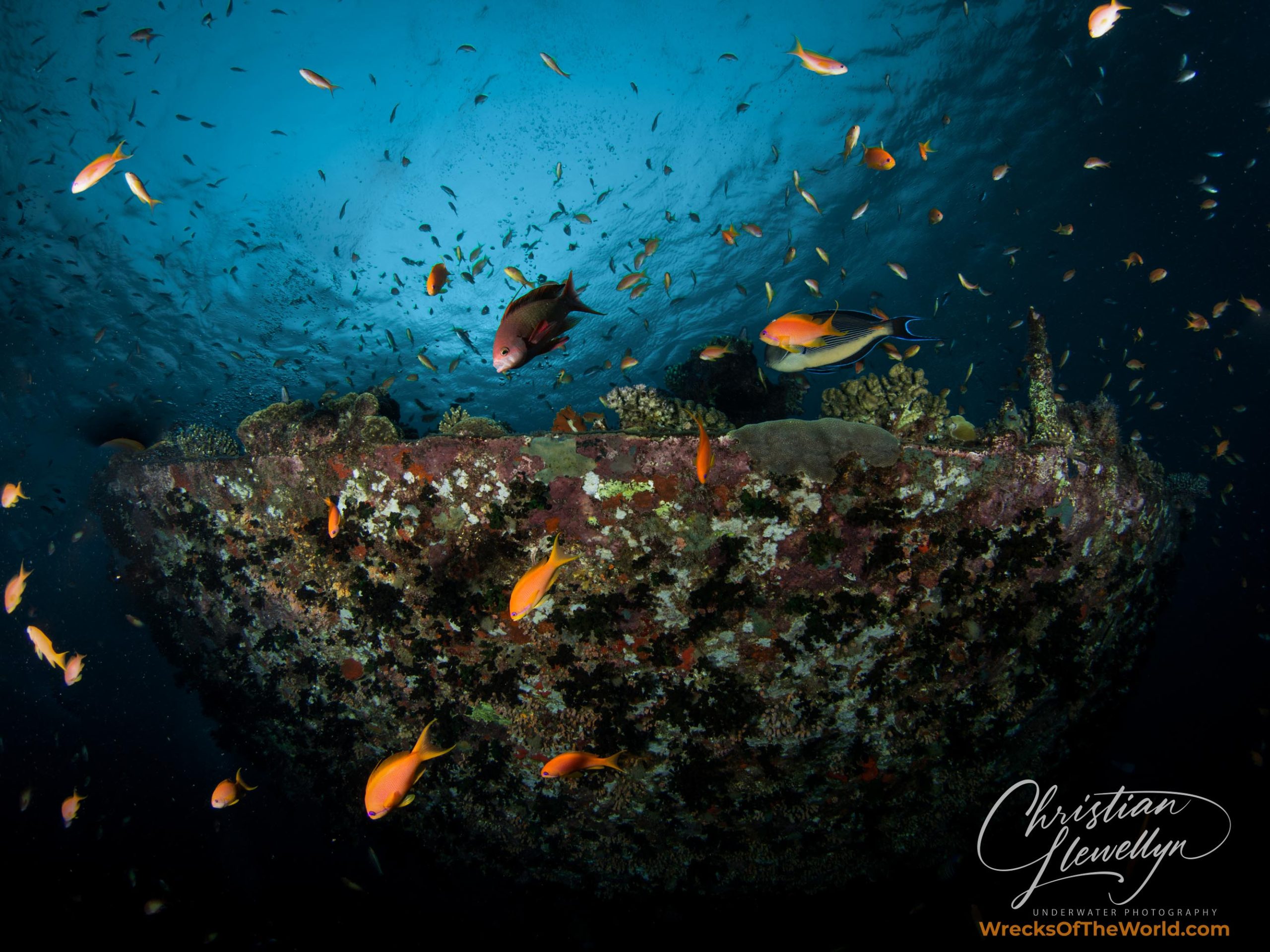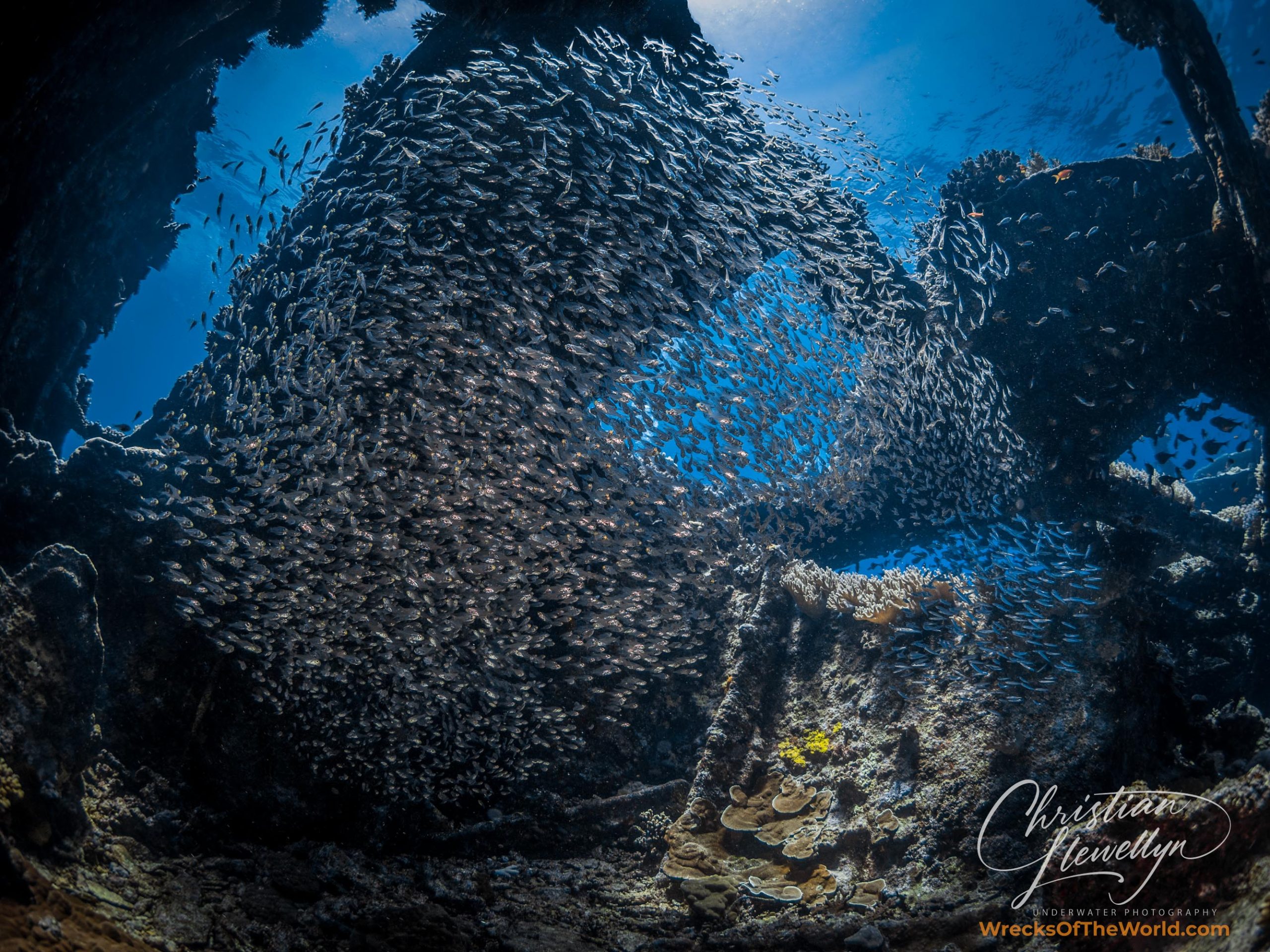
Kingston Wreck Dive Red Sea: My Guide To This Remarkable Site
- Written:
- By Christian Llewellyn
Some of the links on this page may be affiliate links. If you click on them and make a purchase, we may earn a small commission at no extra cost to you. This helps us continue our work—thank you for your support!
Introduction to Kingston Wreck Dive Red Sea

The Kingston wreck dive Red Sea experience offers underwater explorers one of the most photogenic and historically significant dive sites in the northern Red Sea. This British cargo steamer, which met its fate in 1881, is often listed at 75 to 78 meters in length with a gross tonnage of 1,448, now rests at an accessible depth perfect for both novice and experienced divers. The wreck’s relatively intact structure, combined with its vibrant marine ecosystem and fascinating historical narrative, makes the Kingston Wreck dive a must-visit site for wreck enthusiasts and underwater photographers alike. The scattered remains have become an artificial reef, providing a stunning contrast of industrial history against the backdrop of the Red Sea’s crystal-clear waters.
The Story Behind the Kingston Wreck Dive
The Kingston wreck dive history begins with the SS Kingston, a 78-metre British cargo steamer built in 1871. The vessel, a British cargo steamer, departed Cardiff on January 28, 1881, bound for Aden with a cargo of coal. It struck Shag Rock (now known as Kingston Reef) in February 1881, with sources citing dates between the 19th and the 22nd. Under the command of Captain Thomas Richard Cousins, the SS Kingston struck Shag Rock due to a navigational error, resulting in this unfortunate encounter with the treacherous reef system.
What makes this wreck particularly intriguing is how it met its demise – not from a dramatic wartime assault or severe weather, but simply from a navigation error in the difficult-to-navigate Straits of Gubal. After striking the reef, the Kingston was abandoned, reportedly without casualties, although salvagers removed much of the cargo and fittings. Over time, the Red Sea’s strong currents have broken the ship into sections, with the most recognisable features being the bow section and the impressive steam boilers that once powered this mighty vessel through the shipping lanes connecting Europe to the East.

The Stats: Depth, Conditions & Accessibility
Depth Range:
- 4 metres (13 feet) to 20 metres (59 feet) The wreck lies at a depth of 4m at the bow to around 10m at the stern, with deeper sections reaching up to 20m
Water Conditions:
- Visibility: Typically excellent, ranging from 20-30 metres
- Currents: Generally mild, though can be moderate to strong during tide changes. Divers should be cautious and only under favourable conditions.
- Temperature: 22-28°C (72-82°F) depending on season
Accessibility:
- Boat dive from day boats or liveaboards operating from Sharm El Sheikh or Hurghada
- Occasionally included in northern Red Sea wreck itineraries
Best Time to Dive:
- Year-round diving is possible
- Spring (March-May) and autumn (September-November) offer optimal temperature and visibility
- Summer months (June-August) provide warmest water temperatures but can be crowded
4m
Minimum Depth
Boat
Boat Dive Only
20m
Maximum Depth
Season
Mar - Nov
Where is Kingston Wreck Dive Red Sea?
Location
The Kingston wreck is located at Shag Rock (Kingston Reef), approximately 1 mile south of Sha’ab Ali and 6 miles from the Thistlegorm wreck in the Straits of Gubal. This positioning places it conveniently within the popular Northern Red Sea diving circuit, making it accessible from both the Sinai Peninsula and mainland Egypt dive centres. The wreck lies in a relatively sheltered area, which has contributed to its longevity as a dive site despite over a century of exposure to the elements.
Getting There
Getting to the Kingston typically involves flying into either Sharm El Sheikh International Airport or Hurghada International Airport. From Sharm, liveaboards depart regularly for northern Red Sea itineraries that include the Kingston among other wrecks like the Thistlegorm and Dunraven. Day boats also reach the site from Hurghada, though this makes for a longer day trip. Several reputable dive operators in both locations offer guided dives to the Kingston, with many specialising in underwater photography to help capture the wreck’s unique features.
Entry Points & Logistics
Entry points to the wreck are straightforward, with most dive guides beginning at the bow section and moving toward the scattered remains of the stern. The relatively shallow depth profile allows for extended bottom time, giving photographers ample opportunity to capture both wide-angle structural shots and macro details of the marine life that has made the Kingston its home. Most dives follow a circuit that highlights the impressive boilers, scattered hull plates, and the remains of the bow, where the ship’s construction details are still clearly visible after nearly 150 years underwater.
Photographing the Kingston Wreck Dive
The Kingston wreck dive was like stepping into an underwater cathedral of colour and movement. This historic wreck is truly special because it has transformed into a vibrant reef over the decades, teeming with marine life and bursting with coral growth that has reclaimed the human-made structure.

Challenges of Underwater Photography at the Wreck
As I descended onto the Kingston wreck dive site, I immediately faced the classic wreck photographer’s dilemma: how to capture both the scale of the structure and the intricate details of marine life. The lighting conditions varied dramatically throughout the dive. Near the bow section, natural light penetrated beautifully, creating dramatic beams through the broken sections of hull. However, deeper into the wreck’s remnants, particularly around the massive boilers, I needed to rely on my strobes to illuminate the dark recesses.
The currents presented another significant challenge. While generally mild during my dive, occasional stronger currents swept across the wreck site, making it difficult to maintain stable positioning for wide-angle shots. I found myself anchoring against non-living sections of the wreck to compose my shots carefully without disturbing the marine environment.
Navigating the wreck while managing my camera gear required careful buoyancy control. The Kingston’s partially collapsed structure creates numerous swim-throughs and passages where loose equipment could easily damage fragile coral growth or get caught on protruding metal.
Technical Insights & Gear Used
For things less than a pin head I used a Nauticam Super Macro Converter SMC-1 wet lens.
I also have a nauticam housing and 2 inon z240 strobes that i use 4600k filters with.
Tips & Recommendations for Diving Kingston Wreck Dive
1. Choose the Right Dive Season
The Kingston wreck dive is doable year-round, but timing can significantly impact your experience. October to November and April to May offer the best balance of visibility (20-30 metres) and comfortable water temperatures (24-27°C). Summer months (June-September) provide warmer waters but can bring more crowded dive sites. Winter (December-March) offers solitude but occasionally brings choppier surface conditions and cooler waters requiring thicker wetsuits.
2. Assess Your Experience Level
The Kingston wreck dive is suitable for Advanced Open Water divers and above. While the maximum depth of 18 metres is within recreational limits, the combination of potential currents and wreck penetration requires confident buoyancy control and navigation skills. Wreck specialty certification is beneficial but not mandatory for non-penetration dives. Photographers should have experience managing camera gear in variable conditions.
3. Prepare for Strong Currents
Currents around the Kingston wreck dive can change unexpectedly due to its location in the Straits of Gubal. Dive when the tide is changing for calmer conditions. Always carry an SMB (Surface Marker Buoy) and be prepared for drift diving techniques. Strong currents are often more pronounced during the full and new moon phases, but can vary depending on tide and weather conditions.
I found that the early morning dives typically offered the calmest conditions, while afternoon sessions sometimes brought stronger currents from the north. Ask your dive guide about the day’s specific tidal patterns.
4. Use the Right Gear
- Wetsuit Requirements: 3mm shorty during summer months (June-September); 5mm full suit during winter months (December-March)
- Essential Safety Gear: SMB, dive torch, reef hook (for current-prone areas only), and nitrox for extended bottom time
- Equipment for Wreck Diving: Consider bringing a backup light if planning any swim-throughs and wearing exposure protection for arms to avoid cuts on metal surfaces
5. Hire a Reputable Dive Operator
Operators departing from both Hurghada and Sharm El Sheikh visit the Kingston wreck dive site. Reputable companies include Emperor Divers, Blue O Two, and Camel Dive Club, which offer both day trips and liveaboard options. Look for operators that brief thoroughly on wreck diving protocols and environmental care.
6. Plan for Marine Life Encounters
The Kingston offers remarkable biodiversity in a relatively shallow environment. Expect to see schooling fusiliers, surgeonfish, anthias, and resident moray eels. Macro enthusiasts should watch for nudibranchs and various crustaceans among the coral growth. The wreck occasionally attracts larger visitors like Napoleon wrasse and turtles.
7. Respect Depth and Dive Limits
Though relatively shallow, extended bottom time at the Kingston can lead to nitrogen loading. Plan for safety stops and consider using nitrox to extend your dive time safely. The main wreck structure lies between 4-18 metres, but scattered debris can be found slightly deeper.
8. Combine the Dive with Nearby Sites
The Kingston wreck dive pairs well with other northern Red Sea sites. Nearby Sha’ab El Erg offers dolphin encounters, while Sha’ab Abu Nuhas (the “Ships’ Graveyard”) contains multiple other wrecks like the Giannis D, Carnatic, and Chrisoula K within reasonable cruising distance.
Check out the sites further north too if looking to fit in more dives: The Yolanda Shipwreck , The Ulysses Wreck and the Kimon M Wreck
9. Stay Hydrated and Protected
Red Sea diving requires vigilant hydration and sun protection. The combination of boat travel, hot sun, and saltwater immersion increases dehydration risk. Use reef-safe sunscreen, wear UV-protective clothing, and drink significantly more water than usual throughout your trip.
10. Learn the Wreck’s History
Understanding the Kingston’s story enriches your dive experience. Look for the massive boilers that once powered this 19th-century steamship, the scattered cargo remnants, and the unique architecture of Victorian-era maritime engineering. The wreck’s transformation from disaster to thriving ecosystem offers a fascinating glimpse into marine conservation success.
Tips & Recommendations for Photographing Kingston Wreck Dive
1. Use the Right Camera Gear
A wide-angle lens (16-24mm equivalent) is essential for capturing the wreck’s scale and structure. Bring powerful strobes to illuminate the shadows and bring out the vibrant colours of the coral growth. For capturing the abundant macro life, a 60mm or 100mm macro lens works well. A snoot attachment can help isolate small subjects against the busy background of the wreck.
2. Master Your Lighting Techniques
The Kingston’s shallow depth means natural light plays a crucial role in your photography. Early morning provides dramatic light rays through the wreck’s openings. Position strobes at 10 and 2 o’clock positions, angled slightly outward to avoid backscatter. Experiment with using one strobe for fill light and allowing natural light to create dramatic shadows.
3. Stabilise Your Shots in Strong Currents
Current challenges are common at the Kingston. Shoot during incoming tides for better visibility and use the wreck structure to brace yourself, taking care not to damage any coral growth. A telescoping pointer can help stabilise without touching living organisms. In stronger currents, position yourself downstream and allow subjects to come to you rather than fighting the flow.
4. Best Angles & Composition Tips
The bow section offers excellent wide-angle opportunities, especially when shot from below with the sun creating a silhouette effect. Include divers in your composition to provide scale to the massive boilers. The scattered debris field creates natural leading lines that draw the viewer’s eye through your images. Look for frames within frames where the wreck’s structure creates natural windows.
From personal experience, I found that the northwestern side of the wreck catches the best morning light, creating dramatic shadows and highlighting the coral growth against the metal structure.
5. Marine Life Photography Tips
Patience is key when photographing the schools of fish that inhabit the Kingston. Wait for the precise moment when they form cohesive patterns against the wreck’s structure. For shy creatures like morays, approach slowly and consider using a longer focal length to maintain distance. The soft corals often host tiny gobies and blennies that make excellent macro subjects.
6. Respect the Wreck & Environment
Always maintain proper buoyancy to avoid stirring up sediment that can ruin visibility for hours. Never move or manipulate marine life for a better shot. Be particularly careful of your fin kicks when positioning for photographs, as silty areas can quickly reduce visibility to zero.
7. Post-Dive Editing Suggestions
The Red Sea’s clear waters mean less colour correction than many other locations, but you’ll still need to adjust white balance to counter the blue cast at depth. Consider using a graduated filter in post-processing to balance the exposure between bright surface water and darker wreck areas. Subtle clarity adjustments can help bring out the texture of the wreck without looking unnatural.
Practical Kingston Wreck Dive Info & Booking a Trip
Recommended Dive Operators
- Emperor Divers (Hurghada & Sharm El Sheikh) – Offers day trips and liveaboard options with experienced guides
- Blue O Two – Specialises in photography-focused liveaboard trips to northern Red Sea wrecks
- Camel Dive Club (Sharm El Sheikh) – Provides excellent day boat services with knowledgeable local guides
- Dive Pro Academy (Hurghada) – Smaller operation with personalised service and flexible scheduling
- Red Sea Diving Safari (Marsa Alam) – For those looking to combine the Kingston with southern Red Sea sites
I personally recommend Emperor Divers for their excellent dive guides who understand photographers’ needs and their flexible scheduling that allows for early morning wreck dives when lighting is optimal.
Estimated Cost
- Day Trips: £60-90 per person (typically includes two dives, lunch, and equipment)
- Liveaboard Packages: £110-190 per day (all-inclusive with 3-4 dives daily)
- Private Guide Supplement: £40-55 for dedicated guide services
- Equipment Rental: £25-40 for full set if not included in package
- Photography Specific Trips: Add approximately 20% premium for specialised photography itineraries
Conservation Efforts & Regulations
The Kingston wreck falls under the protection of the Red Sea Marine Park Authority, which enforces several regulations:
- No removal of artefacts or marine life from the wreck site
- No gloves allowed (to discourage touching the wreck or marine life)
- Mandatory use of reef hooks rather than direct contact with the reef/wreck if needed in currents
- Dive operator briefings must include environmental protection guidelines
- Recent initiatives have installed mooring buoys to prevent anchor damage
- Photographer code of conduct includes no manipulation of marine life and maintaining proper buoyancy
Local dive operators contribute to conservation through regular reef cleanup dives and participating in coral restoration projects around the wreck site. Many operators donate a portion of fees to local marine conservation organisations working to protect the Red Sea’s unique ecosystem.
My Rating & Final Thoughts
Diving the Kingston wreck offers a perfect balance of history, marine biodiversity, and photographic opportunities. Unlike some of the deeper, more challenging wrecks in the Red Sea, the Kingston provides an accessible yet rewarding experience for underwater photographers at all levels.
I rate this dive site 8.5/10 for its combination of relatively shallow depth, vibrant marine life, and photogenic wreck structure. The only factors preventing a perfect score are the occasional strong currents and the fact that much of the wreck has collapsed over time.
This site would particularly appeal to underwater photographers looking to practise wreck photography techniques in forgiving conditions, marine life enthusiasts who appreciate the biodiversity of artificial reefs, and history buffs interested in 19th-century maritime vessels. The Kingston represents the perfect introduction to Red Sea wreck diving before tackling more challenging sites like the Thistlegorm or Rosalie Moller.
Frequently Asked Questions (FAQs)
Limited penetration is possible around the boiler room area and some sections of the bow. However, over 140 years underwater has caused significant collapse, making extensive penetration impossible and potentially dangerous. Most dive guides offer swim-throughs rather than true penetration dives. Always follow your guide’s recommendations and never enter sections alone.
The Kingston presents an interesting photographic puzzle due to its shallow depth and broken structure. Strong sunlight creates harsh contrast between light and shadow areas, requiring careful exposure balancing. The wreck’s fragmentation means capturing its essence often requires multiple images from different angles rather than one definitive shot. The abundant marine life also moves quickly, requiring fast shutter speeds and careful timing.
The Kingston offers a more accessible and relaxed experience compared to deeper wrecks like the Thistlegorm or Rosalie Moller. While lacking the dramatic cargo and war history of these more famous sites, the Kingston compensates with better natural light, longer bottom times, and more prolific coral growth. Its age also means it has more fully integrated into the marine ecosystem, creating a more seamless blend between artificial structure and natural reef.
Beyond the common reef fish, you should watch for seasonal visitors including eagle rays (October-November), whale sharks (May-July), and occasionally dolphins that pass through the area. Macro enthusiasts might discover frogfish, ghost pipefish, and various nudibranchs that aren’t mentioned in standard guidebooks. Several species of sea slugs documented at the Kingston are rarely found at other Red Sea sites.
The primary hazards include occasionally strong and unpredictable currents in the Straits of Gubal, sharp metal edges on deteriorated sections of the wreck, and the potential for disorientation in lower visibility conditions. Divers should also be aware of fire coral that has grown on parts of the wreck structure, which can cause painful stings if brushed against. Always dive with an experienced guide who knows the site’s current patterns and exit points.
Some of the links on this page may be affiliate links. If you click on them and make a purchase, we may earn a small commission at no extra cost to you. This helps us continue our work—thank you for your support!


